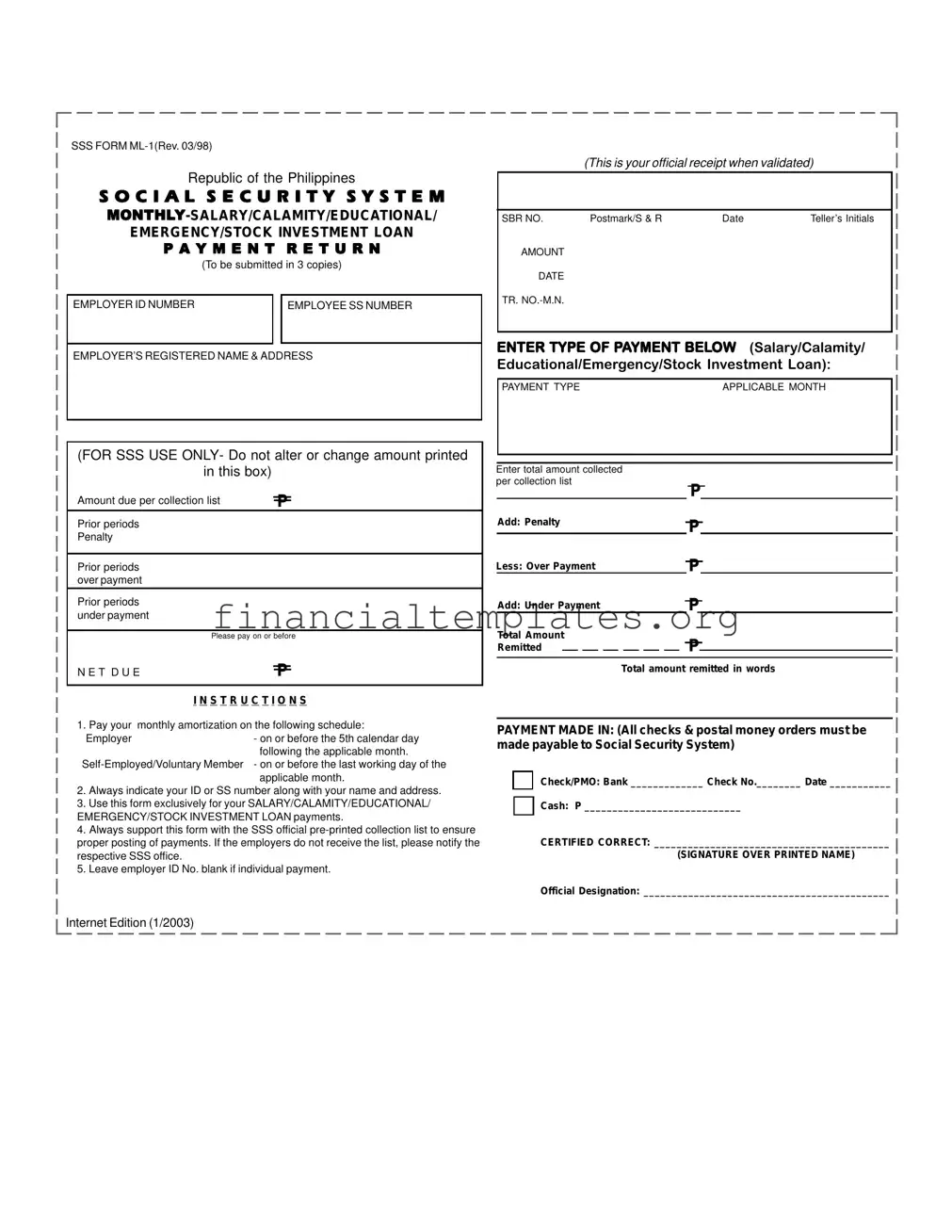The IRS Form 941, Employer's Quarterly Federal Tax Return, shares similarities with the SSS Payment Return form in that it is used by employers to report income taxes, social security tax, or Medicare tax withheld from employees' paychecks. Just as the SSS Payment Return form requires details such as employer ID and amount due including adjustments for previous periods, Form 941 similarly asks for an employer’s identification number and details about the tax owed for the quarter, adjustments from prior periods, and calculates the total tax due or refundable.
The Employment Development Department (EDD) Form DE 9, Quarterly Contribution Return and Report of Wages, is another document akin to the SSS Payment Return form. It serves employers in reporting wages paid to employees and unemployment insurance taxes in certain states. Like the SSS form which is designed to ensure proper posting of loan payment contributions, the DE 9 form is crucial for accurate recording of employees' wages and contributions to state unemployment insurance funds, with specific fields for reporting adjustments and total amounts due for the period.
The Wage and Tax Statement, or Form W-2, similarly necessitates detailed reporting from employers about salaries paid and taxes withheld, akin to the SSS Payment Return form’s requirement to detail loan payments. Though the W-2 primarily focuses on annual reporting to employees for their income tax return filings, both forms emphasize accuracy in the details of payments made, whether for income or loan repayments, and require employer identification numbers and precise calculations of amounts due.
The Federal Unemployment Tax Act (FUTA) Tax Return, Form 940, also parallels the SSS Payment Return form in its objective to collate payments due for a specific period, albeit for unemployment taxes. Employers use Form 940 to report annual federal unemployment taxes, detailing previous adjustments and total due, similar to the process of reporting and adjusting for salary, calamity, educational, emergency, or stock investment loan payments in the SSS Payment Return form.
The Form 1099-MISC, Miscellaneous Income, shares a conceptual resemblance with the SSS Payment Return in the context of reporting specific types of payments. Although 1099-MISC is used by payers to report payments made in the course of a trade or business to others (not employees), it underscores the importance of accurate reporting and payment reconciliation, similar to the need for precise data input on the SSS Payment Return form for various loan repayments.

